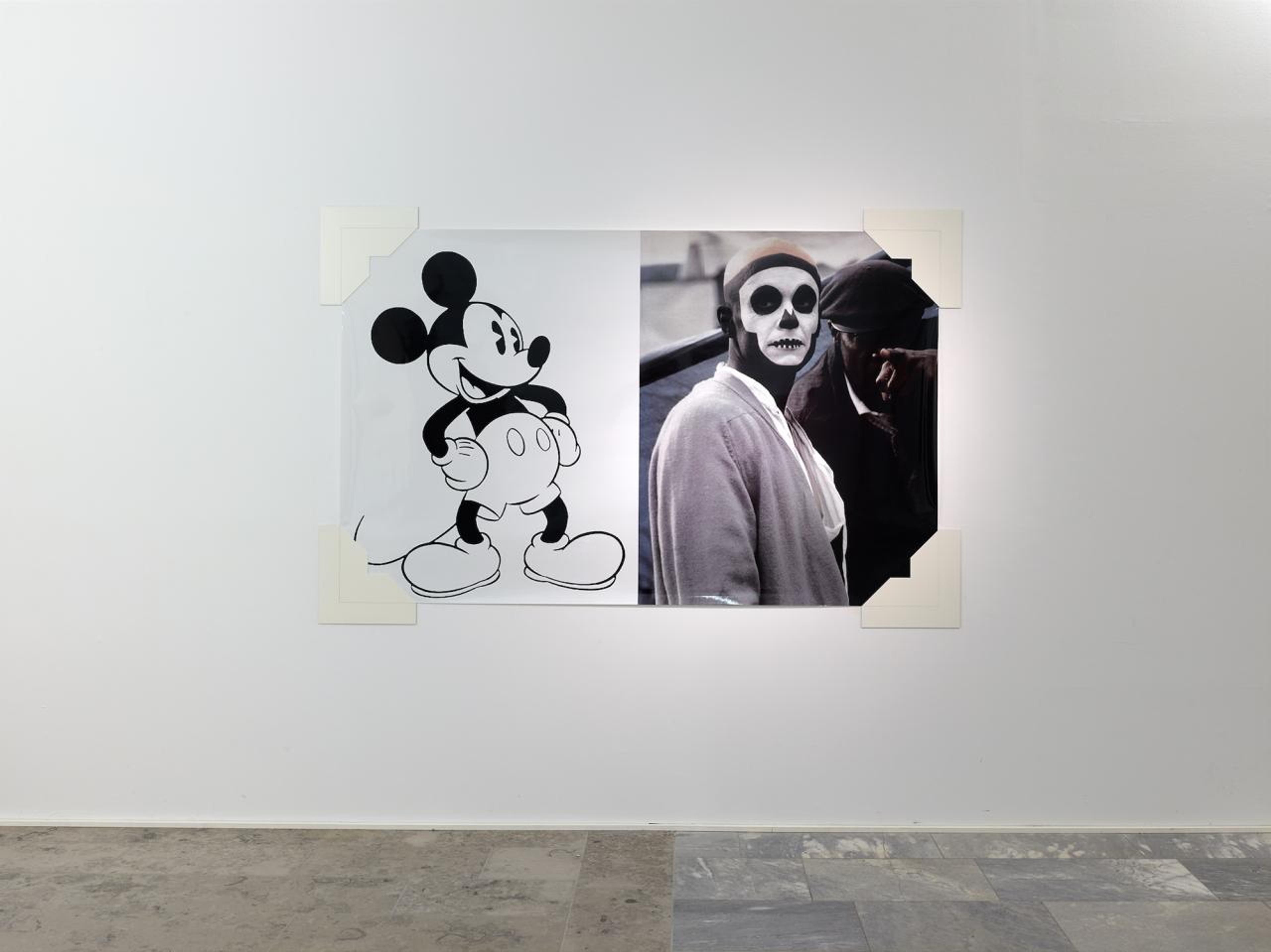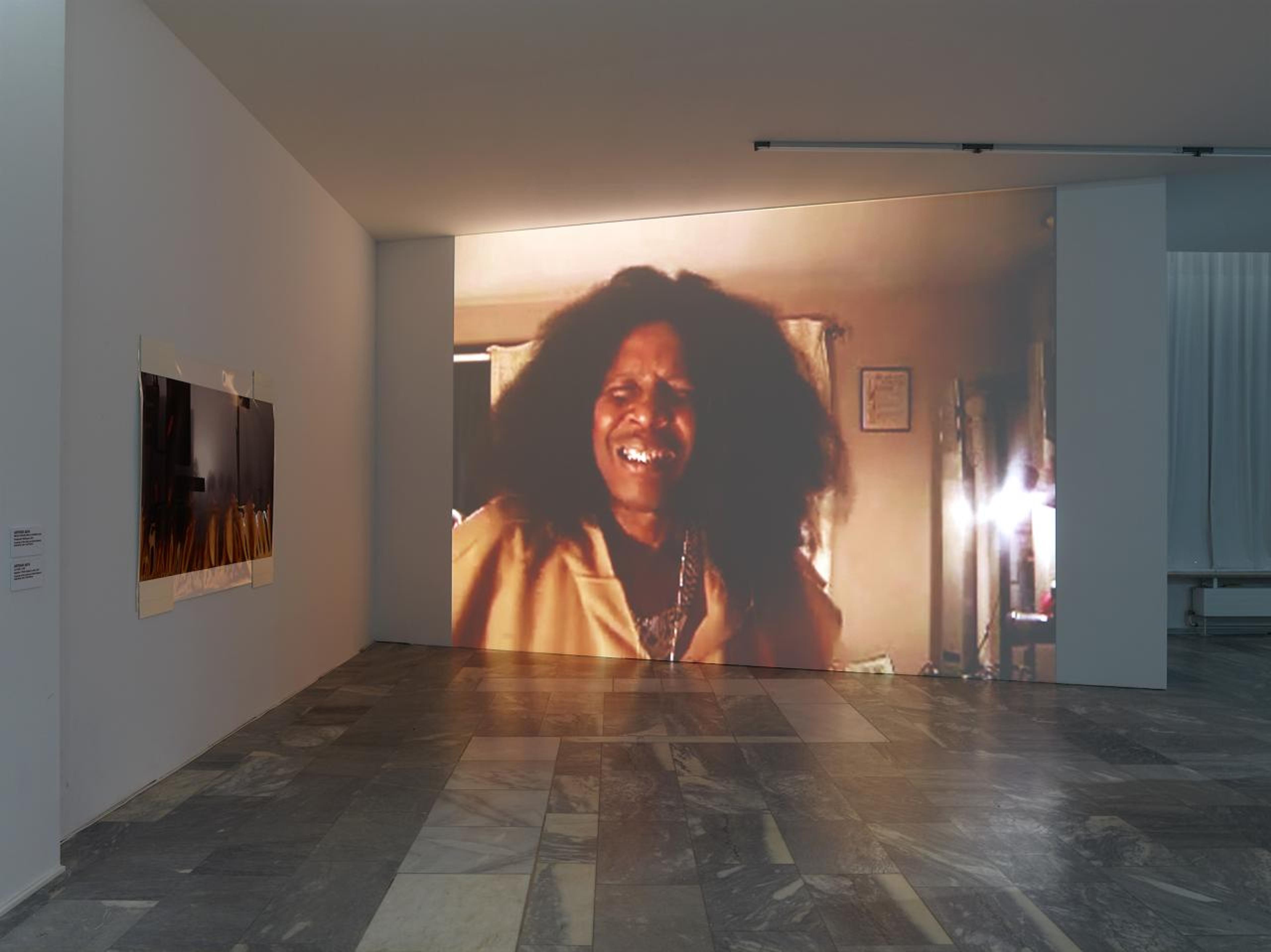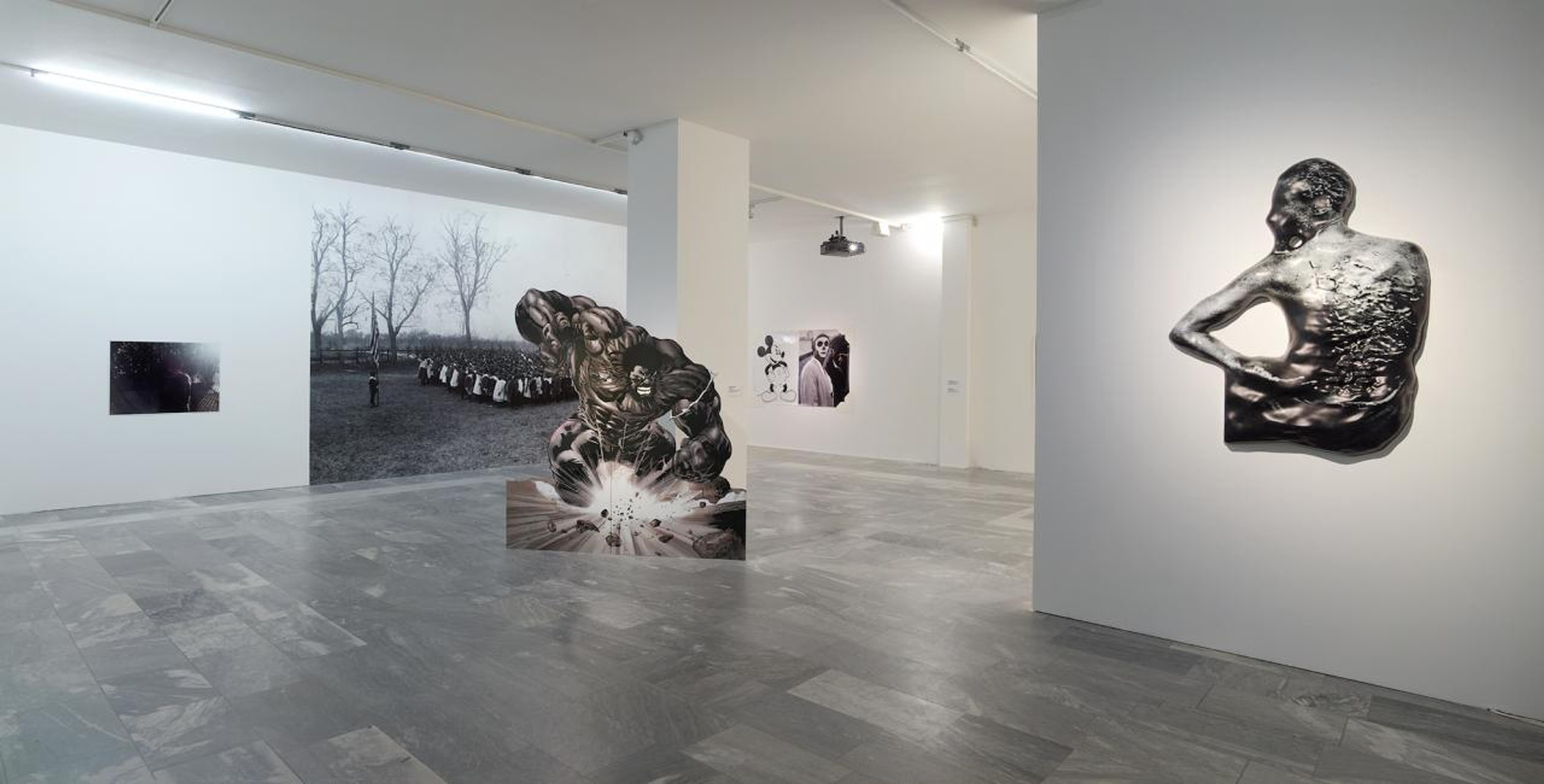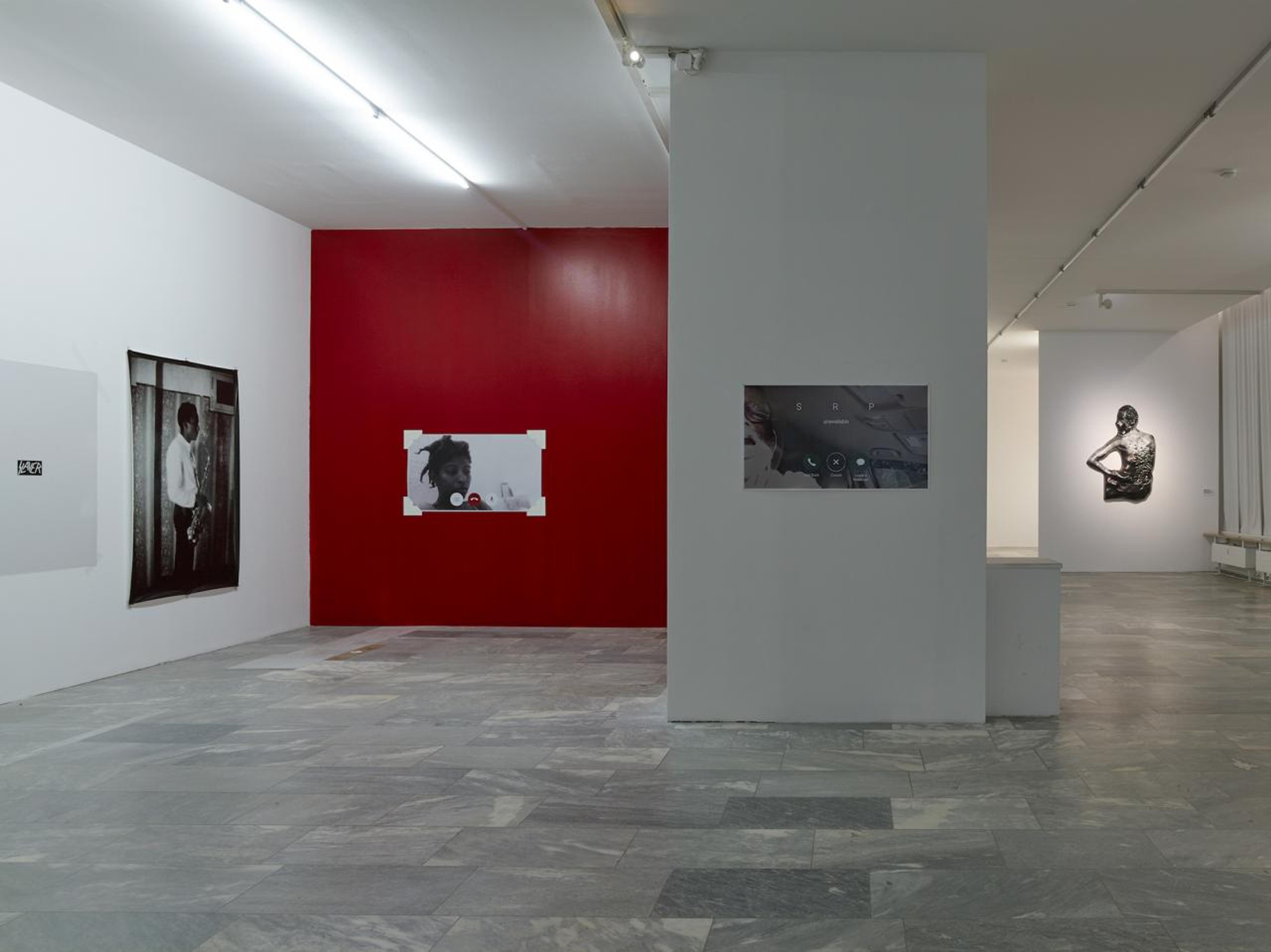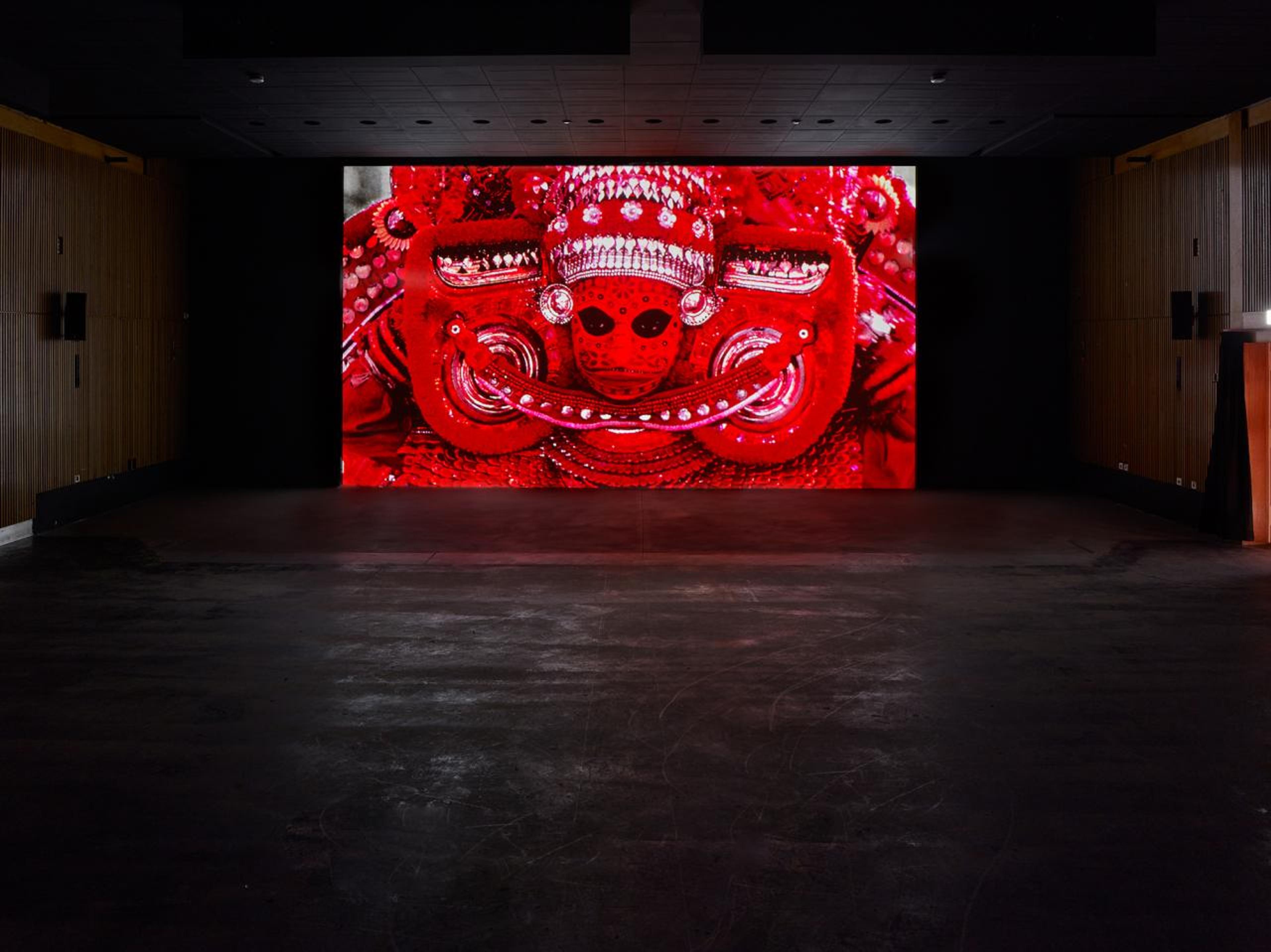Much of the work of Arthur Jafa circles around a question he has described as a mantra: “how do you make a Black cinema with the power, beauty, and alienation of Black music?” The carefully chosen nouns convey the eloquence that seems to come easily to this American cinematographer, filmmaker, and visual artist; elsewhere, he speaks of images as “like the banks of a river,” adding: “it’s the flow in between the images that I think I’m most trying to manipulate.” Others have spoken of his project as the attempt to create an “authentically black visual aesthetics” modelled after “the centrality of black music in American culture and life”.
That’s a good starting point for thinking about this exhibition, the bulk of which is made up of four of Jafa’s video mixtapes, consisting of found footage both recent and historical, vernacular and spectacular, meditative and angry. They cover a lot of ground – they hit, as it were, a lot of notes – and give a sense of the breadth of Jafa’s interests, and of his intellect, empathy, and humour. The arrangement of material within these videos – and the decisions about what to include – seems curatorial, highly attuned to how each segment and each video has a different impact through its immediate context, on and off-screen. Watching an African American father play-fighting with his children through the proxies of a unicorn and other plush animals becomes in some sense not only about families, love, and fatherhood but also about the history and internalization of systemic violence – especially when watching this video means standing with your back to a wall-sized print of a photograph, taken in 1900, of African American schoolchildren saluting the Stars and Stripes. The fact that we’re in Germany and the gesture is a Nazi salute avant la lettre only adds to its force, as does the sense of simultaneous agency and isolation that comes from each visitor being issued their own wireless headphones, actively choosing the right soundtrack for each video.
Arthur Jafa, "Mickey Mouse was a Scorpio,", 2016
Other segments in other videos show Hendrix at a concert, a white American talking about his understanding of America as a white-supremacist country, and self-recorded musical renditions borrowed from the YouTube channel of Missylanyus (credited as one of the contributing artists to the show). How far you are willing to think through the consequences of these various scenes is up to you; they can, if you let them, open up vast questions about identity, history, and race. They can be meandering, or like a kind of alternative TV station playing collages of historical documentary, live music, vlogs, and other wildly disparate mixes of amateur and archival footage. Since there are four such video mixes, you can go to the next projection if one starts to lag. Regardless, since each of them demands some of your time, there’s a cumulative sense that their power comes from seeing the world if not through Jafa’s eyes then at least through the lens of a politics of identity – and, ultimately, in relation to the battle-ready attitude that impels statements of Jafa’s like: “if you point a camera at a Black person, on a psychoanalytic level it functions as a White gaze.”
" Entering the gallery/museum space is like attempting to deflect the white gaze/projectile/beam in a mirrored interior... "
But isn’t the overarching context here, that of the art world, predominantly or systematically or structurally a white gaze? This pressing question – accentuated by the show taking place at some distance from its origin, in Germany – is thematised in an exchange between Jafa and the writer Fred Moten in the booklet accompanying the show, where Jafa says: “I often think of refusing the imposition of the white gaze in terms of deflecting a projectile or beam. Almost like Captain America with a shield. Entering the gallery/museum space though is like attempting to deflect this gaze/projectile/beam in a mirrored interior...” It’s a funny metaphor, and one that resonated with the questions that I, as a white viewer, carried with me into the gallery space, whose “mirrored interior” also reflected my own position in complicated ways.
Arthur Jafa, Apex (2013), installation view
But art is also about cross-cultural communication, and for Berlin audiences I suspect the most exciting and accessible piece in the show was APEX (2013), which is about images, history, and rhythm. The fast-paced sequence of images, synchronised to a 135 bpm soundtrack by Detroit techno pioneer Robert Hood, is something that Berlin audiences are well-trained to appreciate viscerally and emotionally; this time it’s visual, too. This multisensory meditation about history, blackness, the universe, and everything – sometimes with iconic images of the likes of Basquiat, Bob Marley, Billie Holiday, as well as scenes of murder and mutilation, sunspots, close-ups of bacteria, a Rothko, Yolandi Visser from Die Antwoord, Yoda and and and – was presented in a cinema-like space upstairs. By being so sped up, also in comparison with the video collages downstairs, it shed light on how the fast cut – just too slow to be (only) subliminal, but too quick to be taken in, let alone processed, as a discrete unit – need not be a failure of the attention economy but a levelling up into a new and thrilling mode of affective communication.
Arthur Jafa
“A Series of Utterly Improbable, Yet Extraordinary Renditions”
Julia Stoschek Collection
11 February - 25 November
ALEX SCRIMGEOUR is Editor-at-Large at Spike. He lives in Berlin.
– This text appears in Spike Art Quarterly #55 . You can buy it in our online shop –
Arthur Jafa, Instillation shot: “A Series of Utterly Improbable, Yet Extraordinary Renditions”, 2018
Arthur Jafa, Instillation shot: “A Series of Utterly Improbable, Yet Extraordinary Renditions”, 2018
Arthur Jafa, A pex (2013), installation view
Arthur Jafa, A pex (2013), installation view



